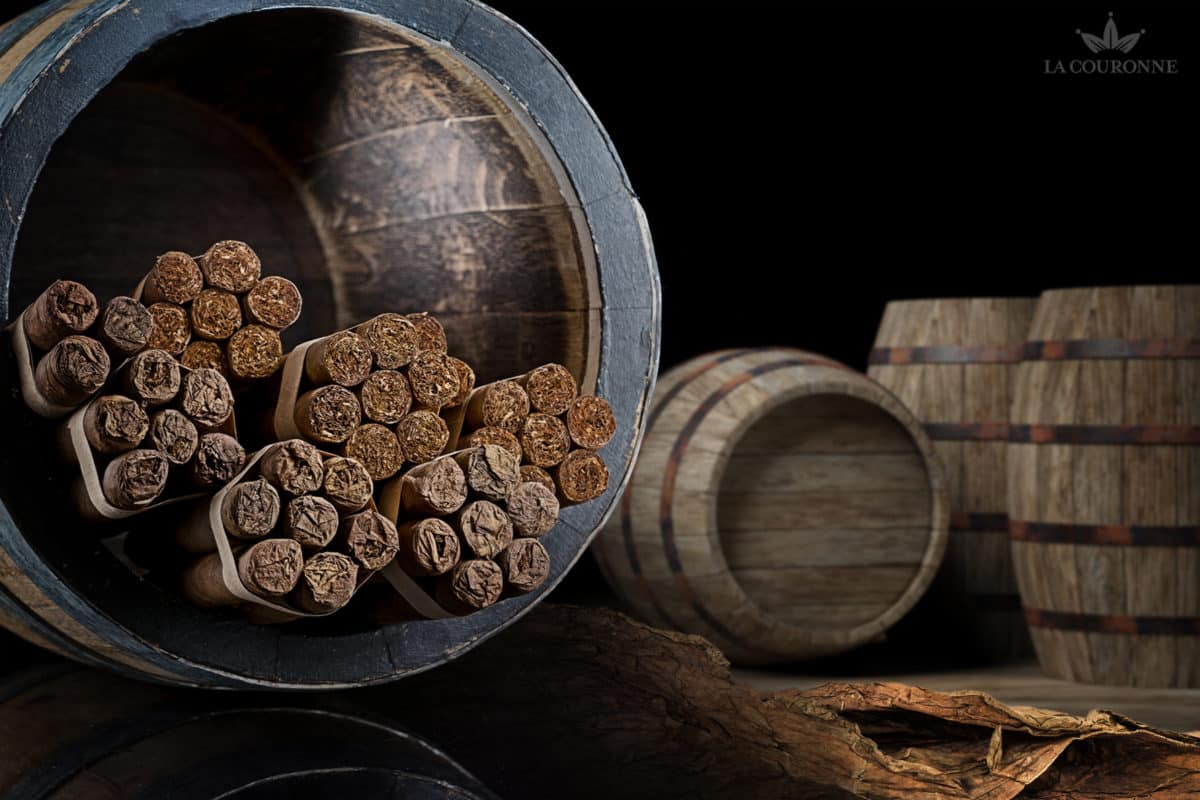All about cigars
Is barrel-aging the new trend for premium cigar producers?
For some ten years now, many premium cigar producers have been using the method of aging tobacco in oak casks to enhance the aromatic profile of their cigars. Well-known to wine and spirits manufacturers, this process was invented in the 17th century after English sailors realized that this method of transport reduced the oxidation of their whiskies and enhanced their bouquet. From then on, oak casks evolved from simple receptacles to first-rate maturing instruments. However, it wasn't until the second half of the 20th century that this technique was adopted by cigar makers.
The early use of oak barrels in the tobacco ageing process
Famous for being one of the only premium cigar brands to undergo a third fermentation of its filler leaves, Cohiba is also the first to have experimented with the technique of aging in oak casks. Eduardo Rivero, the man behind the first Cohiba blends, was behind this revolution. After several experiments, he realized that the use of oak barrels brought greater complexity and balance to tobacco aromas. This innovative method helped make the brand the symbol of Cuban excellence in premium cigars, and affirmed its status as an avant-garde brand.
Following the success of Cohiba cigars, other brands followed suit in the early 2000s. In 2004, for example Perdomo was the first brand to market cigars wrapped in a Connecticut Champagne wrapper aged in bourbon casks. The experiment proved a great success, and the Perdomo Reserve 10th Anniversary Connecticut quickly became a best-seller. Since then, all the brand's top-of-the-range cigars have used bourbon barrel-aged wrappers. That same year, La Aurora also launched its first series made from barrel-aged tobaccos: La Aurora Preferidos Platinum, Emerald and Gold. In 2016 and 2018, it was VegaFina 's turn to try the experiment with two limited editions using rum barrel-aged tobaccos. Among these forerunners is also the Davidoff brand, which in 2016 marketed Camacho American Barrel Aged, a cigar made from bourbon barrel-aged tobaccos.
The oak barrel ageing technique
Aging in oak casks can take place in raw wooden barrels or in "flavored" casks. Unfinished barrels are wooden casks that contain no added substances, allowing the tobacco to take on woody, sweet notes. Like the barrels used to age wines and spirits, they are mostly made from European or American oak, for its strength and watertightness. Flavored" barrels are barrels that have previously been used for aging certain spirits or alcohols, or that have been impregnated with alcohol for a particular fermentation.
Fermentation is an essential stage in the cigar-making process. It takes place just after the drying phase, and can last from 3 months to several years for the finest cigars. During fermentation, the proteins naturally present in tobacco leaves gradually break down, nicotine levels decrease and the acidity of the leaves fades. This process helps to improve the quality and balance of tobacco aromas.
Aging in oak barrels is an additional fermentation that takes place after the rolling phase. Unlike traditional fermentation, this phase does not take place at temperatures between 50° and 60°C, but in conditions of around 15°C. The aim is to enable the tobacco to acquire new characteristics, while preserving its taste.
The effects of barrel ageing on tobacco aromas
Thanks to the barrel-aging technique, tobacco aromas are not only softened, but also gain in complexity. The use of casks impregnated with wine or spirits adds new organoleptic characteristics to cigars.
Among the different types of casks used to age tobacco, bourbon, rum, whisky and sherry casks are the most commonly used, but some cigar makers also use casks impregnated with wines such as chardonnay or pinot noir.
Bourbon casks refine and soften tobacco aromas. They are known for developing pastry aromas such as caramel, vanilla and almond. Sherry casks, on the other hand, enable the development of spicier, fruitier and roasted aromas such as coffee and dark chocolate. Rum casks also offer a wide range of aromas, thanks to their sheer variety. There are rums with woody, spicy, vegetal, floral, fruity or woody aromas. Depending on the desired bouquet, master blenders will opt for one type of rum rather than another.
Over the past few years, cigar manufacturers have seen significant growth in the use of oak barrel aging, driven by consumer enthusiasm for the concept of pairing. Perfect pairings between cigars and spirits are increasingly sought after by aficionados, and this trend continues to grow year on year. Faced with such strong demand, many manufacturers have begun to design cigars with the sole aim of matching them with a particular spirit. Certain spirits, such as Cognac Martell Cohiba , have also been developed with a specific cigar in mind. In this case, the Cohiba Siglo VI.

